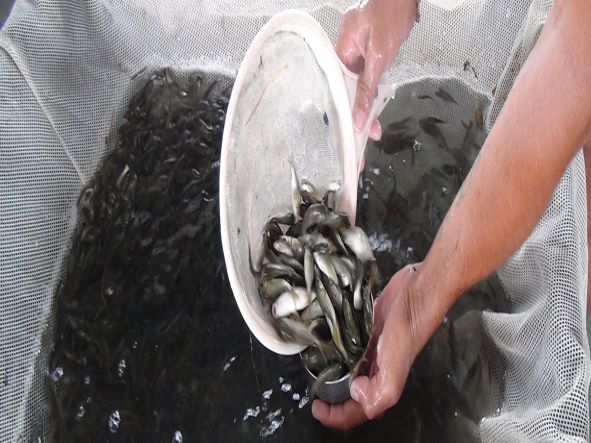Performance efficiency of artificial propagation and breeding of carps
Keywords:
Artificial propagation, carp, efficiency, fecundity, the survival rateAbstract
Sound knowledge of the reproductive traits of brood fish is essential to maximize the propagation efficiency of fishes. This study was undertaken to understand and document the efficiency of artificial propagation and breeding performances of exotic carps at the National Research & Development Centre for Aquaculture (NR&DCA), Gelephu between February and June 2021. The reproductive performances of six carp species (Silver carp, Grass carp, Common carp, Catla, Rohu, and Mrigal; n = 414) were investigated. Two propagation methods: semi-natural for common carp and artificial propagation methods for Indian Major Carp and Chinese Major Carp were studied to understand their breeding performance. The brooders and larvae were fed @ 2 % and @ 4 -8 times the initial body weight and fry and fingerlings @ 50 -100 % of their initial weight respectively. ANOVA results revealed that there are significant differences (F5, 413 = 69.701, p < 0.05) in the mean body weights of brooders used for propagation. However, regression coefficients depict a non-significant (p > 0.05) effect of mean body weight (MBW) on relative fecundity (RF). The association and degree of relationship observed between MBW and RF were negative and moderate correlations (r = -0.661) which could be accounted for due to the low fecundity of heavy brooders relative to age factors. The overall mean body weight recorded was 3383.44 ± 1847.50 g (Mean ± SD) with a range of 2023.45 ± 690.35 g to 5483.57 ± 1502.49 g. Mrigal exhibited the highest absolute fecundity of 405,749 numbers, whereas Rohu had demonstrated the highest relative fecundity of 171,642 numbers. Overall fertilization rate, hatching rate, and fingerling survival rates recorded were 53%, 56%, and 71% irrespective of fish species. These species-specific findings will provide a scientific basis to improve the current hatchery protocols to enhance fingerling production for Carp species in the country.

Downloads
Published
License
Copyright (c) 2022 Bhutan Journal of Animal Science

This work is licensed under a Creative Commons Attribution 4.0 International License.





